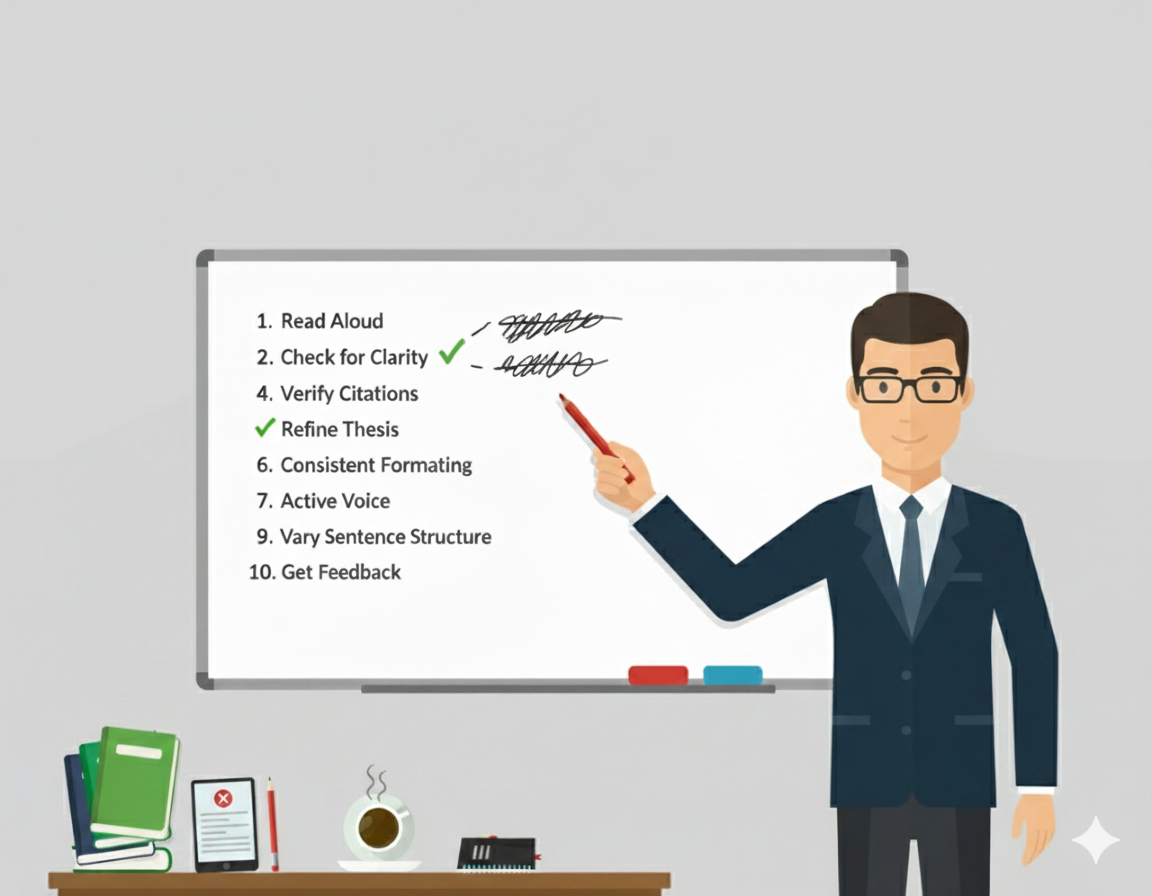
Top 10 Editing Tips to Improve Your Academic Writing
Top 10 Editing Tips to Improve Your Academic Writing
Actionable advice for students: learn how to refine structure, clarity, tone, and citations with practical examples of before-and-after edits.
Why editing matters
Editing is the stage where your ideas become clear, persuasive, and professional. Even strong research and original insights can be undermined by poor organization, unclear language, or citation mistakes. These 10 editing tips focus on actionable improvements that make a measurable difference.
1. Check overall structure and flow
Ensure your essay has a logical structure: introduction, body paragraphs with topic sentences, and conclusion. Reorder paragraphs if necessary to improve flow.
After: Moved methodology section before results to improve logical flow.
2. Refine thesis and topic sentences
Clear thesis and topic sentences guide your reader and keep your argument focused.
After: The lack of teacher training and outdated curricula are primary challenges in today’s education system.
3. Simplify complex sentences
Break overly long or convoluted sentences to improve readability and clarity.
After: Students often procrastinate due to daily distractions. Therefore, developing time management skills early is essential.
4. Remove redundancy and filler words
Eliminate repeated ideas or unnecessary phrases.
After: The experiment results indicate a significant difference.
5. Ensure consistent tone and academic style
Academic writing should remain formal and objective. Avoid contractions, casual expressions, or subjective language.
After: The students’ performance demonstrates a strong understanding of the material.
6. Check grammar, punctuation, and spelling
Even minor errors can distract readers. Use tools like Grammarly or proofreading software, but manually review as well.
After: The data show a significant trend.
7. Verify citations and references
Ensure every in-text citation matches the reference list and follows the required style (APA, MLA, Chicago).
After: Smith (2020) claims that… (reference included in bibliography)
8. Check for logical consistency and evidence support
Ensure all claims are supported by evidence and arguments follow logically.
After: Climate change poses significant environmental risks. Adopting renewable energy sources can mitigate these effects.
9. Use transitions and signposting
Guide your reader through your argument using transitional phrases and clear signposts between ideas.
After: First, the experiment tested X. Next, the second experiment tested Y.
10. Read aloud or get feedback
Reading aloud helps identify awkward phrasing and unclear sentences. Peer feedback provides an external perspective.
Quick editing checklist
- Logical structure and paragraph flow
- Clear thesis and topic sentences
- Concise sentences without redundancy
- Consistent tone and formal style
- Grammar, punctuation, and spelling accuracy
- Citations and references correctly formatted
- Claims supported by evidence
- Transitions and signposting present
- Read aloud and obtain feedback
